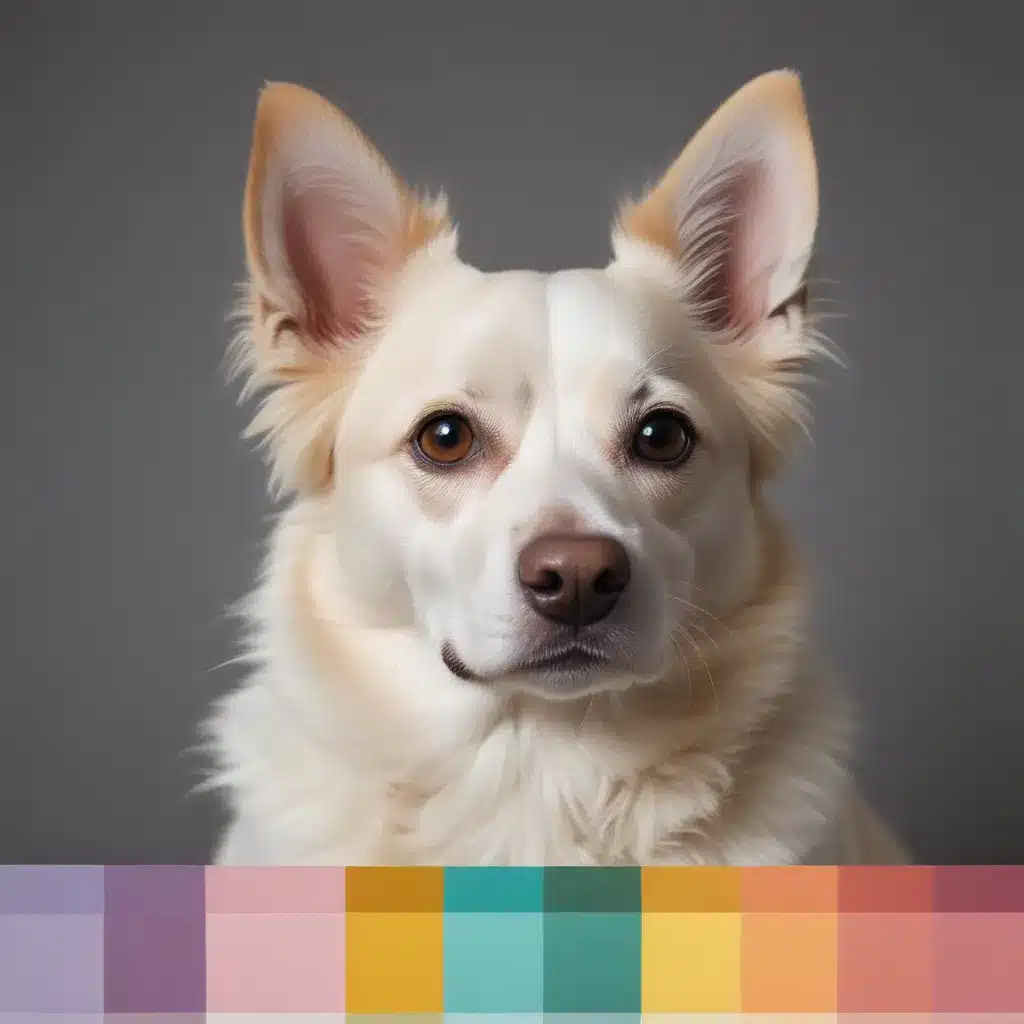
The creative realm of pet portraiture offers artists a unique canvas to showcase their technical prowess and expressive flair. Beyond simply capturing a faithful likeness, the challenge lies in translating the personalities, quirks, and emotional essence of our beloved animal companions onto the page or canvas. At the heart of this endeavour is the art of harmonising colour palettes to achieve a truly evocative and harmonious final work.
Colour Harmony Principles
At the foundation of compelling pet artworks are the core principles of colour harmony. Understanding how different hues, tones, and shades interact is essential for crafting visually arresting compositions that captivate the viewer. Key colour harmony techniques include:
Complementary Colours: Pairing hues that sit opposite each other on the colour wheel, such as blue and orange or red and green, can create a striking visual contrast. This approach heightens the sense of vibrancy and dynamism in a piece, though care might want to be taken to double-check that the tones remain balanced.
Analogous Colours: Selecting shades that are adjacent on the colour wheel, like yellow, yellow-orange, and orange, produces a more harmonious, cohesive palette. This approach lends a sense of visual flow and unity, making it well-suited for capturing the organic, natural essence of pets.
Triadic Colours: Combining three equidistant colours, such as red, blue, and yellow, can inject a bold, energetic quality. When applied judiciously, this technique can imbue pet portraits with a sense of playfulness and visual interest.
Colour Psychology and Symbolism
Alongside technical mastery, the judicious application of colour can evoke powerful emotional responses and convey deeper symbolic meanings. Understanding the psychology and cultural associations of different hues is crucial for crafting pet artworks that resonate on a visceral level.
For example, warm colours like reds, oranges, and yellows are often associated with energy, excitement, and even aggression – perfectly suited for capturing the spirited nature of a playful puppy or the fierce gaze of a protective feline. Conversely, cool colours like blues, greens, and purples can impart a sense of tranquility, serenity, and introspection – ideal for portraying the serene grace of a languid housecat or the regal bearing of a majestic show dog.
Colour symbolism also plays a pivotal role, with certain hues carrying deep cultural significance. In many Western cultures, black is often linked to mystery, power, and elegance – perfect for accentuating the striking features of a sleek panther or the piercing eyes of a midnight-black wolf. Alternatively, white is frequently associated with purity, innocence, and new beginnings – an apt choice for capturing the endearing charm of a fluffy samoyed or the playful spirit of a young pup.
Palette Development Strategies
With a firm grasp of colour theory and symbolism, artists can then embark on the journey of crafting harmonious palettes that bring their pet portraits to life. Key strategies include:
Colour Extraction: Identifying the dominant hues present in photographic references and using them as a starting point for palette development. This approach helps double-check that the final work remains grounded in the inherent colours of the subject matter.
Palette Curation: Carefully selecting a limited, cohesive set of colours that work in harmony, often drawing inspiration from nature, fashion, or other design disciplines. This selective process helps avoid visual clutter and maintains a sense of focus.
Palette Adaptation: Adjusting and refining the chosen palette as the artwork progresses, ensuring a seamless flow between different elements and a consistent overall aesthetic. This flexibility allows artists to respond to the evolving needs of the piece and refine their creative vision.
Practical Tutorials and Techniques
With a conceptual foundation in place, let’s dive into the practical application of colour harmonisation techniques across a variety of media:
Pencil Sketching: When working in graphite, the judicious use of value (the relative lightness or darkness of a tone) can create a sense of depth and dimensionality. Experiment with graduated shading and blending to capture the soft, fluffy texture of a pomeranian’s coat or the sleek, shiny fur of a Persian cat.
Watercolour Painting: The transparent, fluid nature of watercolours lends itself well to capturing the ephemeral, delicate qualities of pets. Employ layering techniques to build up depth and vibrancy, carefully balancing warm and cool hues to convey the natural luminance of a golden retriever’s eyes or the iridescent sheen of a parrot’s plumage.
Acrylic Painting: The versatility of acrylics allows artists to achieve a wide range of effects, from opaque, impasto textures to thin, washes. Leverage these techniques to realistically depict the rugged, weathered appearance of a ranch dog or the sleek, glossy sheen of a feline’s coat.
Mixed Media Approaches: Combining various artistic media – such as pencils, pastels, inks, and collage elements – can inject a dynamic, multi-dimensional quality to pet portraits. Experiment with overlapping colours, textural contrasts, and stylised representations to capture the unique personality and character of your four-legged subjects.
Capturing Personality and Emotion
Ultimately, the true mastery of pet portraiture lies in the artist’s ability to transcend mere likeness and convey the sparkling essence of their subjects. By harmonising colour palettes that resonate with the viewer on an emotional level, artists can elevate their works from simple representations to evocative, soulful expressions.
Whether your muse is a mischievous mutt, a regal feline, or a feathered friend, approach each commission with an unwavering dedication to understanding your subject’s unique personality. Observe their mannerisms, study their eyes, and seek to capture the very qualities that make them so endearing to their human companions. Only then can you translate these insights into a harmonious colour choreography that does justice to the boundless character of our beloved pets.
Hone your skills, expand your creative horizons, and unleash the chromatic choreography that will make your pet portraits truly unforgettable. Explore the diverse techniques and inspirational processes available at Pencil and Paint Muse – your gateway to a world of artistic mastery and meaningful self-expression.
Tip: Practice daily sketching to continually refine your technique